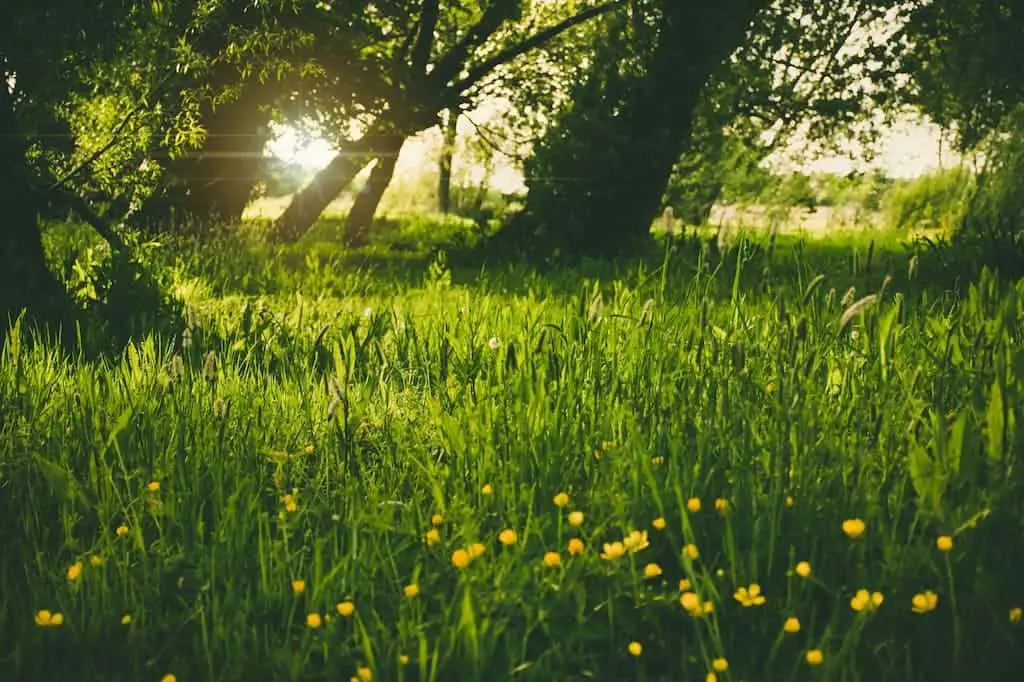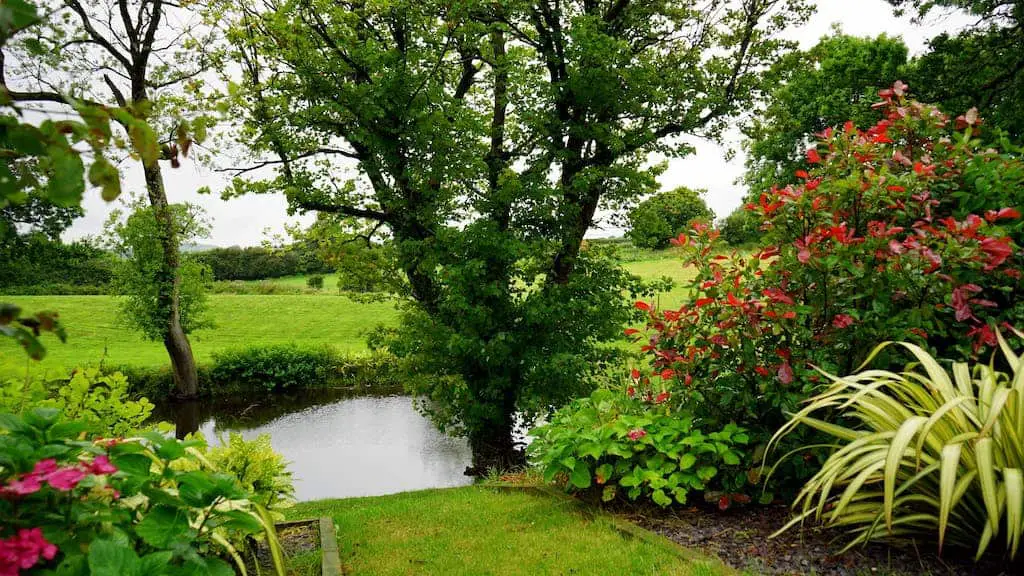With all the attention that eco-friendly concepts are getting, you’ve likely heard the term ‘sustainable landscaping’ before, but do you know what it means? Have you ever actually seen sustainable landscaping for yourself? Well, it’s a hot topic for a reason, and we’re going to take a closer look at just what you should know. After all, you may want to look into setting up sustainable landscapes in your yard and even the yards of your family and friends.
What is Sustainable Landscaping?
Sustainable landscapes are designed to survive without a whole lot of outside interference. They can sustain themselves. Now, that doesn’t mean that you just sit back and let your yard do whatever it wants. Instead, it means that you set up your yard so that natural weather patterns will sustain it. That includes the temperatures that are normal for your area and the amount of rainfall.
If you have ever walked down the street and seen a perfectly manicured lawn with lots of pruned trees and extensive and exotic flower beds, you’ve probably really enjoyed it. But you’ve likely also seen the owners of those lawns covering their flowers and trees when the weather gets too cold or watering the lawn each day. Those are definitely not sustainable landscapes because the typical weather and conditions in the area don’t do enough to keep them looking that way.
Instead, a sustainable landscape uses things that nature itself can nurture. If you live in a colder climate, it means designing your yard with hardy plants that will survive the colder weather. If you live in a dry climate, it means creating a yard that uses drought-resistant plants or decorations. It’s easy to determine which plants to choose. Figure out which Hardiness Zone you live in and choose your plants accordingly. What’s great about all of this is that it’s going to help improve your yard’s eco-friendliness while also making it easier for you in the long run.

Why Sustainable Landscaping?
Let’s get a little bit further into just what sustainable landscaping can do for you and the planet. That way, you can see precisely why it’s gaining so much popularity. First of all, Sustainable landscaping is a whole lot more cost-effective. You don’t need to spend a lot of money on fertilizers, irrigation systems, frost protection, or pest control. Your plants will be in the zone that is suited for them, and they will thrive in a climate that they have evolved to be in.
Once you design and sustainably plant your yard, it’s going to be ready to go—no need to do anything further. Okay, I guess there will probably be some weeding here and there, but all of the struggles to maintain plant material that is not suited for your climate will be gone, including spending money on higher water bills or protective products.
You will certainly enjoy the fact that you will need to invest less time in landscape maintenance. Because your plants are hardy in the climate that happens naturally in your area, you don’t have to worry about them struggling to survive. It means no watering the plants (once they are established), no harmful chemical fertilizers, no plastic covers and tarps to prevent freezing, etc. You can simply put them in and let them go, which frees up your time for more of the other things you would rather be doing (like spending time with family and friends or just relaxing outdoors and enjoying your yard).
More Eco-Friendly
In general, native plants and landscaping will be more resistant to the pests that are native to your area. That means you shouldn’t need pesticides to protect your plants. This doesn’t mean that there won’t be any insects or animals chewing on your plant; that’s just part of nature. It does mean that your plants will be able to handle it because they are well suited for the environment. This will help you improve the health and wellbeing of your yard and the community as a whole because fewer chemicals are getting into the air, the water table, and the ground itself. Plus, you can keep those harmful pesticides and chemicals away from your family and your pets.
Another benefit is the eco-friendly aspect. When you use native plants, you’re cutting down on the potential for harmful invasive species both in plants and the pests that they attract. You will be improving the health of your entire environment. Also, you’re going to use less water, which means you’re wasting less water, which is excellent for the environment. Finally, fewer pesticides mean that fewer chemicals are getting into everything in the environment, which improves plants and animals’ health (as well as your neighbors). Setting up a sustainable landscape in your yard is going to help the planet in more ways than you might think.
Heck, who knows, maybe if you set a good example, that neighbor of yours who is always paying someone to spray their yard with chemical fertilizers, insecticides, and herbicides might just stop in and ask you why you never have those scary warning signs posted in your yard. And if you talk to them nicely and explain how economical and easy it is to be earth-friendly, you might just start a neighborhood transformation! And then, if the neighborhood down the block takes notice and the one after that and the one after that, we might just have a revolution to save the earth that supports us! Now wouldn’t that be inspiring?

Creating Your Own Sustainable Landscape
Sustainability isn’t rocket science; if you do a bit of searching, it is relatively easy to figure out which plants will work in your yard and which will not. Check out the plant hardiness zones map, figure out which zone you live in, and then buy plants accordingly. Please resist the urge to purchase plants simply because they look nice. Buy the ones that will thrive. Anywhere that you buy plants, whether it be at the local garden center or online, each plant will have a label telling you the zone that it will thrive in and telling you how much sunlight it prefers and how much water it prefers.
By the way, hardiness zones are numbered. If you are in zone 5, for example, you can be reasonably sure that zone 5 and lower plants will survive in your yard. If you are near the border of zone 5 and zone 4, you might want to stick with zone 4 plants just to be sure. Most times, plants will have a range, such as zones 6-9. This would be a warm-weather plant, meaning it wouldn’t survive the winter in your zone 5 climate. Even if you get the zone right, be sure to pay attention to the sunlight and water requirements. Planting a dry-loving full sun plant in a wet, shaded area will almost certainly result in death. If you know your yard and pay attention to your plants, you will be setting yourself up for a low maintenance, safe, and delightful yard.
Rock it Out
Rocks are always a great addition to any landscape. No matter where you live, you can use rocks to enhance your gardens’ look. Especially in areas where there’s a lot of dryness or drought, rocks can play a significant role. If you layout a rock and hardy shrubs design, you can create a beautiful landscape without worrying about getting enough rain.
Parts of the country that are dry, desert climates, like parts of Arizona, can be great for this type of landscaping, and you’ll see a lot of it. But you don’t have to sacrifice to have rock landscaping. You can create unique and stunning landscapes with different colors and styles of rocks. Rocks don’t care where they are, so feel free to import exotic rocks into your yard. They survive anywhere!
Make it Your Own
The truth is, there are many different ways that you can create a sustainable landscape. You will want to do your research and spend some time out in your yard getting a feel for things. Pay attention to the shady and sunny spots, the wet and dry spots, etc. Understand how the sunlight changes throughout the day and the year. If you pay attention to your environment and do your research, you can create a sustainable masterpiece all on your own.

Mother Nature Can Help
You can also improve your yard even more by paying attention to Mother Nature. Runoff and drainage patterns through your yard are important factors to consider. You never want to impede drainage, but sometimes proper plantings and allowing the runoff to drain through properly pitched beds can eliminate erosion and keep that valuable rainwater in your yard to invigorate your landscape.
Mother nature also provides plenty of fertilizer in the way of grass clippings, leaves, twigs, veggie trimmings from the kitchen, etc. Make sure that you take advantage and create a composting area in your yard and use all of the leaves in your beds to act as a mulch. It makes no sense to remove the leaves from your yard and then buy mulch.
Should You Go Sustainable?
In short, going sustainable is an excellent option for anyone, and it’s going to help you create a cost-effective and environmentally friendly yard that your friends and neighbors will envy. After all, while they’re working hard to keep their yards looking great, yours is going to look even better, and it’s going to be much less work. What could be better than getting great benefits from not having to put in a lot of work and saving the earth at the same time?

